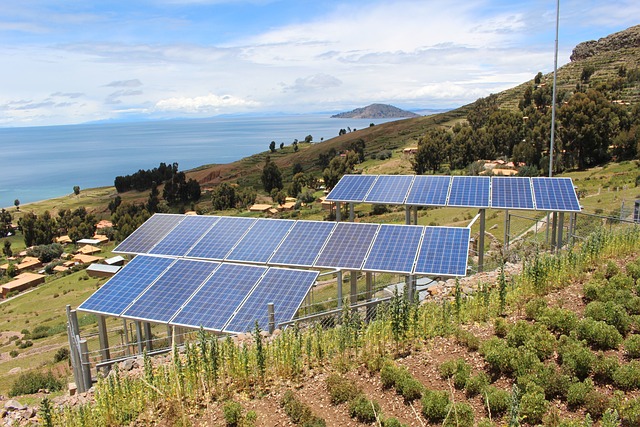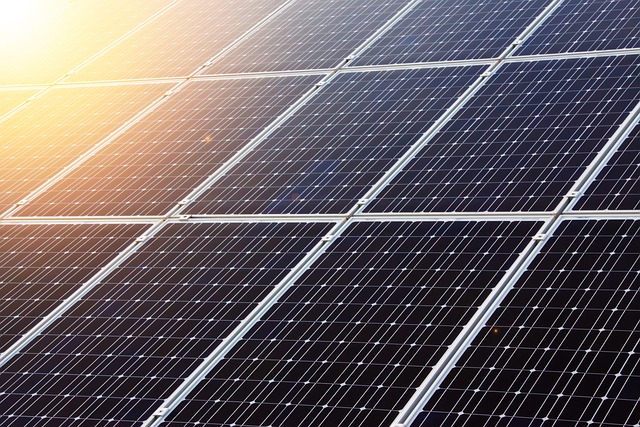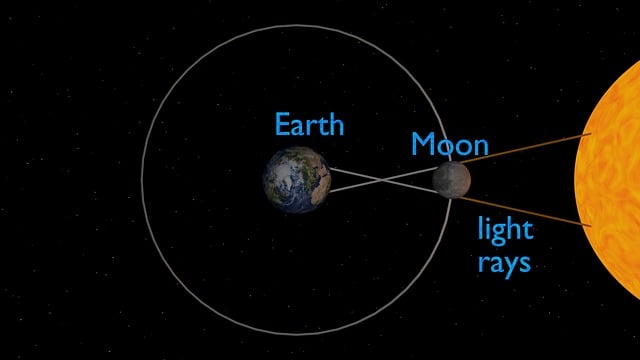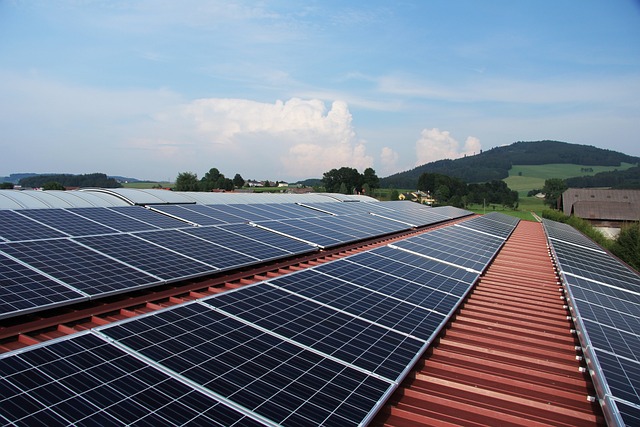2023 marked a pivotal year for solar energy, solidifying its position as a cornerstone of the global renewable energy transition. Its advancements in efficiency, cost reduction, and accessibility have made it an attractive and environmentally friendly alternative to fossil fuels, complemented by government incentives that accelerate its adoption. Solar's versatility allows it to harness energy from both direct sunlight and diffused light, making it suitable for various settings, from arid regions to urban areas with rooftop spaces. Its scalability, from residential systems to large solar farms, showcases its adaptability in addressing diverse energy needs across different sectors. The regulatory framework for solar energy in the U.S. is a complex mix of federal and state guidelines that necessitate stakeholders to have a thorough understanding of both levels of policy to navigate the system effectively. Financial incentives are crucial in promoting solar adoption, with governments worldwide implementing measures like tax credits and feed-in tariffs to lower financial barriers and encourage investment. However, the deployment of solar energy also raises land use concerns and environmental challenges associated with panel production that must be addressed through sustainable practices and careful planning to protect ecosystems and biodiversity. Technical and economic considerations in grid integration are critical, requiring balanced policies to ensure reliable, efficient, and cost-effective connectivity while maintaining system stability and utility financial health. The ongoing commitment to refining these regulations underscores a concerted effort to support solar energy's growth and contribute to a sustainable and resilient energy future.
Solar energy stands as a beacon of sustainable progress, offering a clean and abundant source of power. However, its growth trajectory is punctuated by a complex web of regulations at both state and federal levels. This article delves into the multifaceted hurdles solar energy regulations face, from financial incentives shaping adoption to land use challenges that weigh environmental considerations. It examines interconnection policies, permitting processes, and the contrast between utility-scale and rooftop projects, highlighting the critical role of energy storage in future regulation development. The influence of local governments, technological advancements, and cybersecurity concerns further shape this landscape. Additionally, international trade policies and community solar projects’ success stories and regulatory obstacles are scrutinized to provide a comprehensive understanding of the regulatory environment impacting the expansion and integration of solar energy into our electrical grids and markets.
- Overview of Solar Energy Growth and Potential
- The Complexity of State vs. Federal Regulations Governing Solar Energy
- Financial Incentives and Their Role in Solar Adoption
- Land Use Challenges and Environmental Considerations
- Interconnection Policies and Grid Integration Issues
Overview of Solar Energy Growth and Potential

Solar energy has witnessed a remarkable surge in recent years, with its potential to provide clean, renewable power that significantly reduces reliance on fossil fuels. The growth trajectory of solar energy is steep and promising, as advancements in technology have made solar panels more efficient, affordable, and accessible than ever before. This shift towards solar power is not just a response to environmental concerns but also an economic imperative, driven by the plummeting costs of photovoltaic systems and favorable government incentives aimed at promoting sustainable energy sources.
As of 2023, solar energy accounts for a substantial portion of new electricity generation capacity worldwide. The potential for solar power is vast, with the technology capable of harnessing energy from both the sun’s direct rays and diffused light. This adaptability makes it an attractive option for diverse geographical locations, from the arid deserts to the urban rooftops. Moreover, the scalability of solar installations—from small-scale residential systems to vast utility-scale solar farms—demonstrates its versatility in meeting energy demands across different sectors. However, as solar energy continues to expand, it encounters regulatory challenges that must be navigated carefully to maintain this positive momentum and maximize the benefits of this clean energy source for future generations.
The Complexity of State vs. Federal Regulations Governing Solar Energy

Solar energy regulations navigate a complex web of oversight that spans both state and federal levels, creating a multifaceted environment for policy implementation and compliance. At the federal level, regulatory frameworks such as the Federal Energy Regulatory Commission (FERC) and the Department of Energy (DOE) establish guidelines for the interstate transmission of solar energy and support research and development in the sector. However, these federal regulations do not uniformly apply across all states; they provide a general mandate that individual states can interpret and enforce according to their own resource availability, regional needs, and local zoning laws. This leads to a patchwork of regulatory approaches where one state’s solar energy program may differ significantly from another’s, influenced by unique local environmental concerns, economic incentives, and infrastructure considerations. State-level regulations often dictate siting, permitting processes, and interconnection standards, which can either streamline or complicate the deployment of solar installations based on local interests and priorities. This disparity necessitates a nuanced understanding of both federal and state regulations for stakeholders in the solar energy sector to navigate the intricacies effectively. Stakeholders must stay informed about the evolving nature of these regulations, as changes at either level can have substantial impacts on project feasibility, investment decisions, and overall market dynamics within the solar industry.
Financial Incentives and Their Role in Solar Adoption

Solar energy has become an increasingly viable option for addressing global energy needs, but its adoption is influenced significantly by financial incentives. Governments and private entities worldwide have recognized the potential of solar power to reduce greenhouse gas emissions and promote sustainable development. To accelerate the shift towards renewable energy sources, these entities offer a variety of financial incentives designed to lower the cost barriers associated with solar panel installation and use. These incentives can take the form of tax credits, rebates, subsidies, and feed-in tariffs, which directly reduce the upfront costs for consumers and businesses.
The role of these financial incentives is multifaceted. They not only make solar energy more affordable by decreasing the initial investment required but also serve to mitigate the perceived financial risk associated with adopting a new technology. By providing a clear economic signal that supports long-term investments in solar infrastructure, these incentives help to stabilize the market and encourage innovation within the sector. Moreover, they facilitate the scaling up of solar projects, enabling economies of scale that further drive down costs. The strategic deployment of financial incentives is crucial in charting the course for a sustainable energy future and can significantly influence the trajectory of solar energy adoption globally.
Land Use Challenges and Environmental Considerations

Solar energy harnesses the power of the sun to generate clean, renewable electricity, presenting a promising solution to mitigate climate change and reduce reliance on fossil fuels. However, the deployment of solar energy facilities encounters significant land use challenges and environmental considerations. Large-scale solar installations require substantial tracts of arable or undeveloped land, leading to potential conflicts with agriculture, wildlife habitat conservation, and local community interests. The process of converting land for solar farms can disrupt ecosystems, affect biodiversity, and alter natural landscapes. Additionally, the environmental footprint of manufacturing solar panels, including the extraction and processing of raw materials, contributes to greenhouse gas emissions and pollution unless managed responsibly. Therefore, a delicate balance must be struck between harnessing solar energy’s benefits and preserving the integrity of ecosystems, often requiring comprehensive land use planning, stakeholder engagement, and the adoption of best practices in environmental stewardship to mitigate negative impacts. This approach not only ensures sustainable development but also fosters community support and compliance with environmental regulations.
Interconnection Policies and Grid Integration Issues

Solar energy presents a promising frontier in the transition towards renewable energy sources, yet its integration into existing power grids poses significant challenges. Interconnection policies play a pivotal role in shaping the landscape for solar deployment. These policies must be designed to facilitate the connection of solar installations to the grid in a manner that ensures reliability and efficiency. The technical aspects of interconnecting solar energy systems with traditional grids can be complex, involving issues such as voltage control, power quality standards, and system stability maintenance. Grid operators must navigate these technical hurdles while managing the capacity constraints and ensuring that the integration of solar power does not compromise the overall grid performance.
Moreover, the economic framework within which interconnection policies operate is equally critical. Tariff structures, connection fees, and the allocation of costs and benefits associated with grid upgrades are factors that can either incentivize or deter the adoption of solar energy. Policymakers must strike a balance between accommodating the growth of solar power and maintaining the financial viability of utility operations. This balance is essential to avoid creating barriers that could stifle innovation and investment in solar technology, which is crucial for achieving long-term sustainability goals. The evolving nature of solar energy regulations reflects an ongoing effort to address these complex issues and to ensure a smooth transition towards a more sustainable energy future.
Solar energy’s ascent has been marked by significant growth and potential, yet its trajectory is shaped by a multifaceted regulatory landscape. The intricate dance between state and federal regulations underscores the need for cohesive policies that can harmonize solar energy’s integration into the nation’s power grids. Financial incentives play a pivotal role in nudging solar adoption, addressing economic barriers and fostering investment. Land use challenges and environmental considerations necessitate careful planning to minimize ecological impact while maximizing renewable energy benefits. Interconnection policies and grid integration issues remain critical as the share of solar power within the energy mix expands. Balancing these factors is key to realizing the full promise of solar energy and its contribution to a sustainable energy future.
